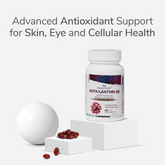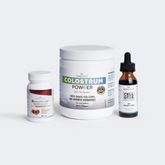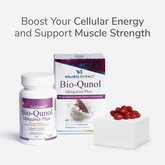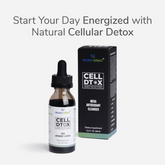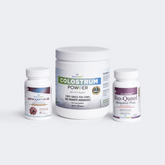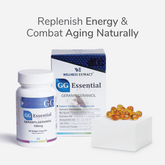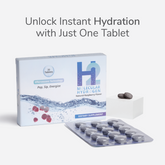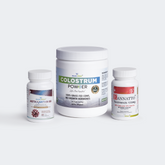Estimated Reading Time: 13 minutes
|Astaxanthin (pronounced asta-ZAN-thin) is a red fat-soluble pigment that belongs to a group of chemicals called carotenoids (plant pigments commonly found in fruits and vegetables). It is responsible for the vibrant red-orange color seen in animals like salmon, red trout, shrimp, krill, crab, lobster, and crayfish. These animals serve as both natural sources and dietary sources of this pigment. It occurs naturally as a secondary metabolite synthesized by bacteria, microalgae, and yeasts.
It is considered a superior antioxidant that helps protect cells from damage caused by free radicals and reactive oxygen. It protects cellular membranes and neutralises free radicals in both water-soluble and fat-soluble areas of the membrane.
Astaxanthin is a powerful antioxidant that can be obtained from various natural and synthetic sources. Its unique molecular structure plays a significant role in its efficacy, and it is important to understand the differences between natural and synthetic astaxanthin. Let’s find out!
What is the Molecular Structure of Astaxanthin?
Astaxanthin has a unique molecular formula, C40H52O4, with a molecular mass of 594.84g. Its chemical name is 3,3′-dihydroxy-4,4′-diketo-β-β carotene, which consists of two asymmetric carbons located at the 3′ and 3′ β-ionone rings.
What is the Difference Between Natural and Synthetic Astaxanthin?
|
Natural |
Synthetic |
|
|
Source |
Produced by microalgae (Haematococcus pluvialis) |
Produced in laboratories using petrochemicals |
|
Chemical structure |
3S, 3'S form |
It contains a mix of 3S, 3S, 3R,3'R, and 3R,3'S forms, with a higher amount of 3R,3'S. |
|
Molecular structure |
Perfectly fit in cell membranes |
Doesn’t fit in cell membranes |
|
Bioavailability |
Higher |
Lower |
|
Antioxidant power |
6000x more potent than Vitamin C, 800x stronger than CoQ10, 110x more potent than Vitamin E, and 5x stronger than β-carotene |
Significantly less potent |
|
Safety approval |
GRAS approved |
Not classified as GRAS |
What is The Source of Astaxanthin?
Humans primarily obtain astaxanthin through seafood consumption or by extracting it from various sources, including:
|
Table 1: Natural Sources of Astaxanthin and Their Concentration Levels |
|
|---|---|
|
Phaffia rhodozyma (Yeast) |
0.4% |
|
Krill |
0.02% to 0.1% |
|
Wild Salmon |
26–38 mg/kg |
|
Trout |
6–25 mg/kg |
|
Shrimp & Lobster |
1–4 mg/kg |
Astaxanthin is also obtained from various microorganisms, as shown in Table 2. Studies have highlighted Haematococcus pluvialis—a type of microalgae- as the most important natural source. It contains the highest concentration of astaxanthin compared to other sources and is also highly bioavailable, meaning the body can absorb and utilize it efficiently.
|
Table 2: Astaxanthin Content in Various Microbial and Algal Sources |
|
|
Sources |
Astaxanthin Percentage (%) |
|
Haematococcus pluvialis |
3.8 |
|
Chlorococcum |
0.2 |
|
Chlorella zofingiensis |
0.001 |
|
Neochloris wimmeri |
0.6 |
|
Agrobacterium aurantiacum |
0.01 |
|
Xanthophyllomyces dendrorhous |
0.5 |
But did you know about Haematococcus pluvialis? Let's discuss in detail!
What is Haematococcus Pluvialis?
Haemtococcus Pluvialis is a type of green microalgae that thrives in freshwater environments, particularly in ponds and areas with abundant sunlight. It is known for producing high levels of astaxanthin when exposed to stressors like high salinity, lack of nitrogen, high temperature, and intense light. Humans widely use it.
However, astaxanthin extracted from Haematococcus pluvialis is widely available in the market as a supplement. The algae are cultivated in controlled environments to produce high-quality astaxanthin, which is then processed and sold as a supplement. It is widely available, and its biological activities have been extensively studied in both in vitro and in vivo models, showcasing its remarkable health benefits.
What are Astaxanthin's biological activities in in vitro and in vivo models?
1. A Superior Antioxidant:
Astaxanthin is one of the most potent natural antioxidants that helps protect the body from oxidative stress and free radical damage. Free radicals are unstable molecules produced in the body that can damage proteins, fats, and even DNA, leading to various health issues. Astaxanthin's unique molecular structure allows it to work inside and outside cell membranes, neutralizing harmful molecules before they cause damage.
Studies have shown that astaxanthin is 10 times stronger than other carotenoids like lutein and β-carotene and 100 times more potent than vitamin E. It also boosts the body's natural defense enzymes like superoxide dismutase and thioredoxin reductase, which fight oxidative stress. Research also shows that it helps protect the liver, stomach, and overall health by reducing inflammation and oxidative damage.
2. A Natural Anti-Inflammatory Shield
Astaxanthin, derived from microalgae, is a natural source of bioactive compounds and has anti-inflammatory properties. It neutralizes harmful free radicals that reduce inflammation and protect cells from damage. It also inhibits key inflammatory pathways, such as the NF-κB pathway, which is responsible for producing pro-inflammatory molecules like cytokines, and the COX-2 enzyme, which reduces pain and swelling.
Blocking these pathways helps reduce chronic inflammation without the side effects associated with synthetic anti-inflammatory drugs. Astaxanthin also helps protect mitochondria, the energy-producing structures of cells, from oxidative damage, which further reduces inflammation at the core.
Studies show that astaxanthin from algae helps reduce stomach inflammation caused by H. pylori bacteria and even protects against stomach ulcers. It also plays a role in lung health, as research found that when combined with Ginkgo biloba and Vitamin C, it helps lower lung inflammation and improves breathing. It is also beneficial for the skin, shielding it from UV-induced damage by preventing collagen breakdown and slowing signs of aging.
3. Astaxanthin: Anti-Lipid Peroxidation Activity
Anti-lipid peroxidation activity refers to a substance's ability to inhibit or reduce the oxidative degradation of lipids (fats) in cell membranes. A study showed that astaxanthin and its esters showed 80% anti-lipid peroxidation activity in ethanol-induced gastric ulcer rats and skin cancer rats. It also helps prevent oxidative stress, maintain healthy cells, a stronger immune system, and overall wellness.
Why is Astaxanthin considered a Superior antioxidant compared to Others?
1. Astaxanthin helps protect the body from damage caused by free radicals. It does this by donating electrons to unstable molecules, making them more stable and stopping harmful chain reactions. This protective effect benefits many living organisms, including humans.
2. Astaxanthin exhibits antioxidant activity that is ten times more than that of other carotenoids such as zeaxanthin, lutein, canthaxanthin, and β-carotene, 100 times more than that of alpha-tocopherol, and 6000 times stronger than that of Vitamin C.
3. Due to its unique structure, Astaxanthin has special chemical properties. The presence of certain groups in its molecule makes it a stronger antioxidant.

It works better than many other antioxidants because it can connect with cell membranes from the inside and outside, providing better protection.
Now, let's delve into some of the health benefits of the highly acclaimed antioxidant astaxanthin.
What are the Health Benefits of Astaxanthin?
1. Astaxanthin for Skin Health:
Astaxanthin is one of the ultimate secrets for your skincare routine. It offers numerous skin health benefits, supported by various studies and clinical trials that explore its chemical properties and potential.
-
UV Protection: A randomized, double-blind trial was conducted on healthy men and women aged 20 to 60. The results indicated that astaxanthin may help reduce wrinkles and fine lines. It may also protect the skin from UV rays and improve skin elasticity.
-
Improves skin elasticity: In 2021, a systematic review of clinical trials found that astaxanthin offers significant benefits for skin aging. The study showed that astaxanthin may help reduce wrinkles and fine lines and improve skin elasticity and hydration.
-
Improves Skin Hydration: In 2017, a randomized clinical trial showed that regularly taking astaxanthin may help reduce oxidative stress and improve skin texture and hydration in middle-aged adults.
-
Anti-aging effects: In 2019, the study highlighted that astaxanthin may help reduce oxidative stress, a key factor in aging and skin damage. It may also protect mitochondria, which is beneficial for skin health. It may help reduce wrinkles and improve elasticity and skin texture.
Also read: 8 ways to use astaxanthin for skin health.
2. Astaxanthin for Better Eye Health:
Astaxanthin is considered one of the most potent antioxidants, and a recent study shows it helps protect your eyes from damage. A clinical trial with 40 participants over 12 weeks showed that taking astaxanthin can help reduce eye inflammation, protect the retina from damage caused by free radicals, and improve overall eye comfort and function. It may help support better eye health, especially as we age.
-
Improving eye health: A 2022 study involving 60 participants over 12 weeks found that astaxanthin's antioxidant properties can help protect the eyes from oxidative damage and reduce inflammation.
-
Reducing eye fatigue: A study involving 60 participants showed that participants who consumed astaxanthin experienced improvements in visual function and also reduced eye fatigue.
-
Improving eye dryness: In a randomized, placebo-controlled trial, 45 participants ingested 6 mg of astaxanthin orally over 4 weeks. The results found that astaxanthin helps reduce symptoms of dry eye, including eye irritation and discomfort, by improving tear production and reducing inflammation.
-
UV protection: A study found that astaxanthin lowers the incidence of macular degeneration and shields the eyes from the damage that prolonged exposure to blue light from screens can cause.
3. Astaxanthin for Cardiovascular Health:
Astaxanthin has been gaining attention due to its potential to support heart health. Let's explore recent studies that highlight its potential benefits for cardiovascular health.
-
Reducing oxidative stress: A randomized controlled trial involving 60 participants showed that astaxanthin helps improve heart health, such as blood circulation, and reduces oxidative stress.
-
Helping to Reduce Cholesterol: Astaxanthin helps lower bad cholesterol (LDL), total cholesterol, and triglycerides, all of which are related to heart problems.
-
Improving heart function: A pilot study with 40 participants showed that astaxanthin improves heart function and blood flow.
-
Improving Blood Flow: A 2011 study involving 40 human participants suggests that astaxanthin helps improve heart health, including better blood flow, and also helps reduce harmful oxidative stress.
Also read: Astaxanthin: A natural ally in cardiovascular wellness
4. Astaxanthin for Cognitive Health:
Studies have shown that astaxanthin helps reduce inflammation and oxidative stress in the brain, both of which are linked to neurodegenerative diseases. A review-based study suggested that astaxanthin may offer protection to the brain by reducing oxidative stress and inflammation.
-
Natural defense against TBI: A 2020 study suggests that astaxanthin may naturally defend against traumatic brain injury (TBI) by reducing oxidative stress and preventing brain cell death.
-
Improving cognitive function: A 2024 study conducted on the human population shows that astaxanthin may enhance cognitive function and slow neurodegeneration.
5. Astaxanthin For Bone Health:
Astaxanthin has shown potential in addressing concerns such as bone loss and osteoporosis. Recent studies show that astaxanthin may be beneficial in improving age-related osteoporosis by preserving bone mass and serum calcium/phosphorus levels and increasing the bone mineralization rate.
-
Enhancing cartilage repair: The study was done on rabbits with osteoarthritis caused by knee ligament damage. It has been found that astaxanthin may help improve the condition of the cartilage and also help produce matrix metalloproteinases (MMPs), enzymes that break down cartilage.
-
Supports bone health: The study conducted with rats found that astaxanthin could be beneficial for protecting bone health in people with diabetes and gum disease.
How is Astaxanthin Absorbed?
When you ingest astaxanthin, it mixes with bile acids in your intestine, which helps absorb lipids. This mixture forms tiny lipid molecules called micelles in the intestine. These micelles help astaxanthin pass through the intestinal walls and ride along in your blood using special transporters called LDL and HDL (the same ones that move cholesterol). Then, it travels to different organs where it's needed—this is how astaxanthin reaches various tissues in your body.
Why is Astaxanthin Gaining Popularity?
Astaxanthin has gained popularity as a supplement because of its many health benefits and potent antioxidant qualities. Various industries—such as pharmaceuticals, nutraceuticals, cosmetics, and food and beverages—widely utilize it. Grand View Research reported that the global market for astaxanthin was worth $1.9 billion in 2022 and expects it to grow by 17.2% every year from 2023 to 2030. This rising demand reflects the growing interest in natural health remedies and the increasing use of astaxanthin in skincare, anti-aging, and the prevention of chronic illnesses.
The Ultimate Astaxanthin Combo: What Science Says You Should Pair It With
For maximum benefits, the ultimate combo is astaxanthin, geranylgeraniol (GG), and vitamin E tocotrienols. A recent study published in the Journal of Clinical Biochemistry and Nutrition found that taking astaxanthin with tocotrienols for 12 weeks significantly improved memory and cognitive function in healthy individuals. This combination works together to combat oxidative stress, protect brain cells, and support overall brain health.
Adding geranylgeraniol (GG) to this combo takes it a step further! GG is essential for cellular energy, supports CoQ10 production, and plays a key role in healthy aging. It may also aid in muscle recovery and contribute to strong bones and joints. Together, astaxanthin, tocotrienols, and GG create a powerhouse combination for brain health, energy, and overall vitality.
Also read: Why is everyone talking about the Astaxanthin-GG combo?
How to Take Astaxanthin?
You can find astaxanthin in different forms, including foods rich in this nutrient and supplements. Here's how you can add it to your daily routine:
-
Food sources: Astaxanthin can be sourced from foods like salmon, shrimp shells, fungi, trout fish, bacteria, adonis plants, and microalgae.
-
Supplements: If you prefer a more convenient option, astaxanthin capsules are a great choice. Just take them with water, following the directions on the label. When choosing an astaxanthin supplement, look for high-quality, GRASS-approved, and free from additives and contaminants.
-
Dosage: Safety reviews have found that natural astaxanthin supplementation is well-tolerated in humans, even at doses up to 24 mg per day, with no significant adverse effects reported. Astaxanthin is a fat-soluble compound, so the recommendation is to take it with meals containing healthy fats for optimal absorption.
What are the Side Effects of Astaxanthin Tablets?
Astaxanthin is found naturally in certain foods like salmon, shrimp, krill, and algae. It is safe when used properly, but there are some side effects associated with astaxanthin highlighted in the study, which include:
-
Particularly when used in higher amounts, astaxanthin may result in moderate gastrointestinal discomfort, such as bloating, diarrhea, or stomach cramps.
-
Astaxanthin may cause allergic reactions, particularly in those who are allergic to seafood.
-
Astaxanthin may affect hormone levels, but further study is required to comprehend this possible side effect completely.
Since most people usually find astaxanthin safe when taken at moderate levels, they experience these adverse effects rarely and mildly. However, you should always speak with a healthcare provider before incorporating any supplements into your regimen.
Who cannot take astaxanthin?
Astaxanthin is a powerful antioxidant, but certain individuals should avoid its use, including:
-
Pregnant and Breastfeeding Women: Due to limited research on its safety during pregnancy and lactation, it's advisable to avoid astaxanthin if you’re pregnant.
-
Individuals with Allergies: If you are allergic to astaxanthin, related carotenoids, or their sources (e.g., Haematococcus pluvialis), you should refrain from using it.
-
Individuals with Low Blood Pressure: Astaxanthin may lower blood pressure; those with hypotension or on blood pressure-lowering medications should use it cautiously.
-
People with Calcium Imbalances: Astaxanthin might lower blood calcium levels; individuals with hypocalcemia or parathyroid disorders should consult a healthcare provider before use.
So, it is advisable to consult with a healthcare professional before starting any new supplement, especially if you have existing health conditions or are on medications.
Frequently Asked Questions (FAQs)
Q1 What does astaxanthin do to your body?
Astaxanthin is a potent antioxidant that helps protect your cells, supports skin, eye, heart, and brain health, and reduces inflammation.
Q2 Who cannot take astaxanthin?
Pregnant or breastfeeding women, people on blood thinners, or those with allergies to seafood or algae should consult a doctor before taking it.
Q3 What is astaxanthin best for?
It’s best for reducing oxidative stress, supporting skin and eye health, boosting endurance, and overall wellness.
Q4 What are the side effects of astaxanthin tablets?
It’s generally safe but may cause mild stomach discomfort, red-colored stools, or allergic reactions in some people.
Q5 Is astaxanthin safe to take daily?
Yes, astaxanthin is safe for daily use and offers many health benefits.
Disclaimer: These statements have not been assessed by the FDA. The information contained within this page is for educational purposes only. It is not intended to replace the advice or attention of health care professionals.
References
-
“Astaxanthin: Sources, Extraction, Stability, Biological Activities and Its Commercial Applications—A Review.” Food Chemistry, vol. 224, 2017. Accessed Apr. 17, 2025. [Online]. Available: https://www.sciencedirect.com/science/article/abs/pii/S0308814616319410
-
Guerin, M., Huntley, M.E., & Olaizola, M. “Haematococcus astaxanthin: Applications for human health and nutrition.” Journal of Agricultural and Food Chemistry, vol. 53, no. 3, pp. 10231–10248, 2005. https://pubs.acs.org/doi/10.1021/jf101187k
-
Fukami, A., et al. “Oral Supplementation with Astaxanthin Improves Eye Fatigue.” Nutrients, 2023. https://pmc.ncbi.nlm.nih.gov/articles/PMC9899915/
-
Rao, A.R., et al. “Astaxanthin and Brain Function: A Review.” Marine Drugs, 2015. https://pmc.ncbi.nlm.nih.gov/articles/PMC3083660/
-
Kishimoto, Y., et al. “Anti-Inflammatory Properties of Astaxanthin.” Marine Drugs, vol. 13, no. 9, 2015. https://www.mdpi.com/1660-3397/13/9/5750
-
Goto, S., et al. “Pharmacological Effects of Astaxanthin in Cardiovascular Disease.” British Journal of Pharmacology, 2021. https://bpspubs.onlinelibrary.wiley.com/doi/10.1111/bph.15346














![Top 5 Best Vitamins for Men in Their 30s [Backed by Science!]](http://wellnessextract.com/cdn/shop/articles/Vitamin_for_men_8fe0fe21-19b1-4020-b895-dc104449637e_165x.webp?v=1765878148)




